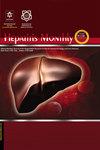Transcriptome and microRNAs Profiling Analysis of Huh7.5.1 Cells in Response to Hepatitis C Virus Infection
IF 0.6
4区 医学
Q4 GASTROENTEROLOGY & HEPATOLOGY
引用次数: 0
Abstract
Background: There is a great need for further study on the mechanism of HCV infection or its pathopoiesis mechanism. Therefore, an HCV infection model was used to analyze the mechanisms of transcriptional and post-transcriptional regulation of gene expression. Methods: The detections of transcriptome and microRNAs expressions in Huh7.5.1 cells infected with JFH-1 were conducted with next-generation sequencing. Moreover, bioinformatics data were obtained. Results: There were 21,827,299, and 42,588,251 reads qualified Illumina read pairs obtained from JFH-1-infected (HCV) and non-infected (blank) Huh7.5.1 cells, respectively. Moreover, 678 and 1,041 mRNAs data with a length of 101 bp from HCV and blank Huh7.5.1 cells cDNA sequence were generated, respectively. The results of comparative transcriptome sequencing analysis declared 460 differentially expressed mRNAs in HCV-infected cells, including 152 upregulated mRNAs and 308 downregulated mRNAs (HCV vs. blank). Gene Ontology (GO) and KEGG pathway enrichment analyses indicated the involved pathways, such as MAPK, p53, and PI3K/Akt signaling pathways, as well as oocyte meiosis and pathways in cancer. Conclusions: Our work confirmed the transcriptome and microRNA data profiling from the cell model of HCV infection with JFH-1 using next-generation sequencing (NGS). Furthermore, the gene expression and regulation information or signaling pathways associated with the pathopoiesis mechanism of HCV infection were identified.Huh7.5.1细胞对丙型肝炎病毒感染的转录组和microrna分析
背景:HCV感染的发生机制或发病机制有待进一步研究。因此,我们采用HCV感染模型来分析基因表达的转录和转录后调控机制。方法:采用新一代测序技术检测JFH-1感染Huh7.5.1细胞的转录组和microrna表达。此外,还获得了生物信息学数据。结果:从jfh -1感染(HCV)和未感染(空白)的Huh7.5.1细胞中分别获得21,827,299和42,588,251对符合条件的Illumina reads。此外,从HCV和空白Huh7.5.1细胞cDNA序列中分别获得678和1041个长度为101 bp的mrna数据。比较转录组测序分析结果显示,HCV感染细胞中存在460种差异表达mrna,包括152种上调mrna和308种下调mrna (HCV vs空白)。基因本体(Gene Ontology, GO)和KEGG通路富集分析表明,参与的通路包括MAPK、p53和PI3K/Akt信号通路,以及卵母细胞减数分裂和癌症通路。结论:我们的工作证实了使用下一代测序(NGS)的HCV感染JFH-1细胞模型的转录组和microRNA数据分析。此外,我们还确定了与HCV感染发病机制相关的基因表达和调控信息或信号通路。
本文章由计算机程序翻译,如有差异,请以英文原文为准。
求助全文
约1分钟内获得全文
求助全文
来源期刊

Hepatitis Monthly
医学-胃肠肝病学
CiteScore
1.50
自引率
0.00%
发文量
31
审稿时长
3 months
期刊介绍:
Hepatitis Monthly is a clinical journal which is informative to all practitioners like gastroenterologists, hepatologists and infectious disease specialists and internists. This authoritative clinical journal was founded by Professor Seyed-Moayed Alavian in 2002. The Journal context is devoted to the particular compilation of the latest worldwide and interdisciplinary approach and findings including original manuscripts, meta-analyses and reviews, health economic papers, debates and consensus statements of the clinical relevance of hepatological field especially liver diseases. In addition, consensus evidential reports not only highlight the new observations, original research, and results accompanied by innovative treatments and all the other relevant topics but also include highlighting disease mechanisms or important clinical observations and letters on articles published in the journal.
 求助内容:
求助内容: 应助结果提醒方式:
应助结果提醒方式:


